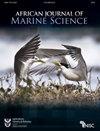空间保护对南非东开普省庞多兰海洋保护区礁鱼群落的影响监测
IF 1.4
4区 生物学
Q3 MARINE & FRESHWATER BIOLOGY
引用次数: 2
摘要
监测海洋保护区(MPAs)对于评估其有效性和改善管理至关重要。在这项研究中,每季度在四个地点(10 - 30米深度)部署一个单摄像头的远程水下视频系统(mono-BRUVS),以量化南非东海岸(印度洋)庞多兰海洋保护区(禁止捕捞)和邻近开发区域的珊瑚鱼群落。为了评估鱼类群落的大小(生物量),我们使用了来自同一地区的10年研究线钓数据(2006-2016)。采用单变量和多变量分析比较了保护区和开发区鱼类群落的丰度和生物量。在保护区和开发区内,鱼类群落的丰度和生物量存在显著差异。这些差异主要是由于在邻近的开采区进行线钓和清除了较大的掠食性物种,如黄腹岩鳕Epinephelus marginatus、Scotsman Polysteganus praeorbitalis和黑贻贝Cymatoceps nasutus。这些捕食者的移除可能会导致营养级联或猎物释放,导致非常不同的鱼类群落。这些结果强调了在评估海洋保护区的有效性时,调查整个鱼类群落而不仅仅是针对渔业物种的重要性。本文章由计算机程序翻译,如有差异,请以英文原文为准。
Monitoring the effects of spatial protection on the reef fish communities of the Pondoland Marine Protected Area, Eastern Cape Province, South Africa
Monitoring marine protected areas (MPAs) is critical for evaluating their effectiveness and for improving management. In this study, a single-camera baited remote underwater video system (mono-BRUVS) was deployed quarterly at four sites (10–30-m depths) to quantify the reef fish communities in protected (no-take) and adjacent exploited areas of the Pondoland MPA on the east coast of South Africa (Indian Ocean). To assess size (biomass) of the fish communities, we used 10 years of research linefishing data (2006–2016) from the same areas. Univariate and multivariate analyses were used to compare abundance and biomass of the fish communities between protected and exploited areas. Significant differences were detected between fish communities in protected and exploited areas based on their abundance and biomass. These differences are primarily ascribed to linefishing and the removal of larger, predatory species such as yellowbelly rockcod Epinephelus marginatus, Scotsman Polysteganus praeorbitalis and black musselcracker Cymatoceps nasutus in the adjacent exploited areas. Removal of such predators may have caused trophic cascading or prey release, resulting in very different fish communities. These results highlight the importance of investigating the entire fish community and not only target fishery species when evaluating MPA effectiveness.
求助全文
通过发布文献求助,成功后即可免费获取论文全文。
去求助
来源期刊

African Journal of Marine Science
生物-海洋与淡水生物学
CiteScore
2.60
自引率
16.70%
发文量
17
审稿时长
6-12 weeks
期刊介绍:
The African (formerly South African) Journal of Marine Science provides an international forum for the publication of original scientific contributions or critical reviews, involving oceanic, shelf or estuarine waters, inclusive of oceanography, studies of organisms and their habitats, and aquaculture. Papers on the conservation and management of living resources, relevant social science and governance, or new techniques, are all welcomed, as are those that integrate different disciplines. Priority will be given to rigorous, question-driven research, rather than descriptive research. Contributions from African waters, including the Southern Ocean, are particularly encouraged, although not to the exclusion of those from elsewhere that have relevance to the African context. Submissions may take the form of a paper or a short communication. The journal aims to achieve a balanced representation of subject areas but also publishes proceedings of symposia in dedicated issues, as well as guest-edited suites on thematic topics in regular issues.
 求助内容:
求助内容: 应助结果提醒方式:
应助结果提醒方式:


